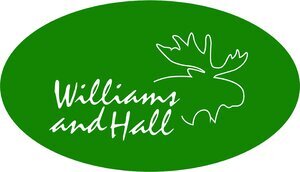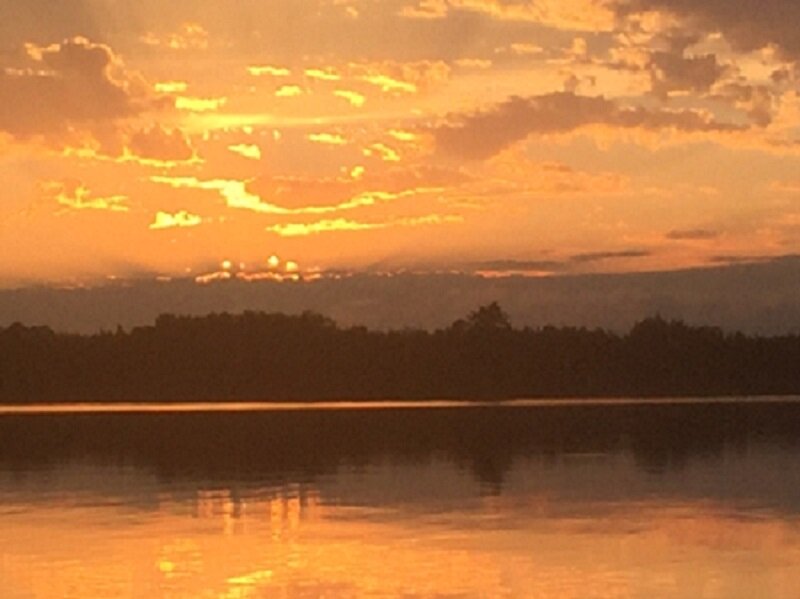
Natural Wonders and Northern Lights of the Boundary Waters
The Wonders of Canoe Country
The Boundary Waters abounds with natural wonders. Charles Kuralt writes:
“A Birch tree grows on the shore of Moose Lake. A canoe lies on the bank beside it. From that Birch tree, you could paddle that canoe up to the end of Moose Lake and camp overnight and put the canoe in another lake the next morning.
You could cross that lake, and camp for the night, and paddle across another lake on the third day. You could keep this up, visiting another lake for a hundred years, and you still wouldn’t get to all the lakes.” (Charles Kuralt, Charles Kuralt’s America (G.P. Putnam’s Sons, 1995), p. 141.)
The uniqueness that are the natural wonders of the Boundary Waters
We have already provided you with a general introduction to the uniqueness of the Quetico-Superior region. We have told you about the differences between Ontario’s Quetico Provincial Park and Minnesota’s Boundary Waters Canoe Area Wilderness. For many of you, this may be enough about this breath-taking area.
There are those, however, who may wish to learn more about this unique area. In the following pages, you have the opportunity to get a more in-depth look at both the natural and man-made history of this truly amazing land.
GEOLOGY IN THE BOUNDARY WATERS
A short brisk hike to the top of Thunder Point, located on Knife Lake, leaves an individual speechless at the view of the natural wonders.. For as far as the eye can see, sheer rock cliffs and crystal clear lakes fill the horizon. On the short hike back down you begin to notice the large boulders strewn along each side of the trail. Upon reaching the shoreline the multitude of small polished rocks that form the gravel beach. Welcome to the breath-taking wonders of the canoe country.
UNDERWATER VOLCANOES AND A HUGE SEA ONCE EXISTED
Envision this area, once entirely covered by a huge sea, suddenly transformed by active underwater volcanoes. Approximately 2.7 billion years ago, undersea volcanoes covered this region with pillow basalt. Exposed pillow basalt, also known as Ely Greenstone, still exists in this area. It is one of the oldest exposed rock formations on earth. One of many true natural wonders.
Starting about 30,000 years ago and lasting for about 15,000 years, the northeastern portion of Minnesota was covered by the Laurentian Ice Sheet. During that period, the Rainy Lobe of the ice sheet engulfed the area. It was filled with hard crystalline rock and sandstone abrasives. These rocks and abrasives, coupled with the wet, slippery base of the glacier, effectively scoured the Northwoods landscape. As the glacier slowly moved across the wilderness, weakened areas in the bedrock were stripped clean. Most of the debris from this area was deposited in areas in southern Minnesota, Wisconsin, and the Dakotas. A few glacial deposits, in the form of gravel and sand bars, can be found scattered throughout the canoe country lakes. Overall very little glacial deposit was left behind.
AREAS OF GEOLOGICAL INTEREST:
Pillowed Greenstone – view on the north side cliff in Ottertrack Lake, the South Arm of Knife Lake, the north side of the east arm of Jasper Lake. Also as a historical point of interest in Ely.
Explosive Volcanogenic Sediments – view the dark green sandy shore and outcrops on the north shore of Kekekabic Lake.
Volcanic Rock Flows – Jasper Lake and the west end of Eddy Lake.
Cherty Iron-Formation – is a combination of magnetic, hematitic, and sulfide-rich layers. See them at the Tower-Soudan mine and nearby areas.
Graywackes and Slates – find this throughout the Knife and Little Knife lake areas. Native Americans use slate to make spears, knives, and arrow points. Knife and Little Knife received their names from these slate arrows.
Saganaga Batholith – a pinkish-gray granite in lakes running southwest from Saganaga to Ensign Lake.
Vermilion Batholith – primarily a granite formation existing from Snowbank Lake northeast through Crooked to LacLaCroix Lake.
THE BOUNDARY WATERS NIGHT SKY
The rippling, spiraling light green vapors dance across the black sky – leaping, soaring, disappearing, only to reappear stronger and more vibrant than before. For those who have never experienced the northern lights of the Boundary Waters, also known as the Aurora Borealis, the night sky will never be looked upon the same. You may catch a glimpse on your canoe trip. After all, the Boundary Waters is a dark skies sanctuary. There is little if any light pollution. The BWCA northern lights are spectacular.
SOLAR FLARES MOVE INTO SOLAR WINDS -THE NORTHERN LIGHTS
The beauty of the northern lights begins as solar flares that move into space creating solar winds. As the winds travel towards the earth, they are caught up in Birkland currents that exist outside the earth’s atmosphere. The currents enter the earth’s atmosphere containing highly excited electrons. As the electrons pass through the atmosphere they collide with either oxygen or nitrogen atoms. The varying green, reds, and blues that we visibly see are the result of these collisions.
NORTHERN LIGHTS CAN BE SEEN IN THE BWCA
The northern lights are constantly occurring 24 hours a day as the auroral ovals. These auroral ovals exist above the north and south poles. The best times to catch the northern lights show are on clear evenings, closest to the new moon. They keep no schedule, so patience and vigilance on the part of the viewer is a must. Sometimes the northern lights will appear as little more than a light green haze just above the north shore tree line. On other nights, you will see a show of greens, reds, and blues that entertain for hours. Of course, you might also see shooting stars as well.
This unique website offers detailed information on solar flares, and when the “flares” will most likely reach the earth for peak viewing. The site also hosts spectacular photos of northern lights and other northern light information.
For additional reading or video footage on northern lights, check out Candace Savage’s book or video entitled Aurora: The Mysterious Northern Lights.
To See these Natural Wonders Book Your Fun and Unique Canoe Adventure Today
Start planning now so you can make great life-lasting memories tomorrow. Come see some of the brightest most vibrant northern lights you’ll ever see, make a reservation, call us at 218-365-5837 or contact us today and start planning your Boundary Waters Canoe Trip Experience!



